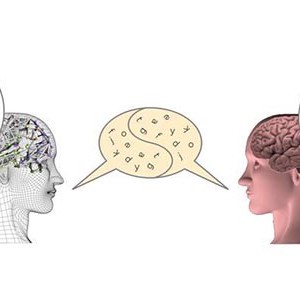November 15, 2015 – Research teams from the University of Sassari in Italy and Plymouth University in the United Kingdom have created a computer-based artificial intelligence cognitive model that learns to speak the way a human child does. Called ANNABELL (Artificial Neural Network with Adaptive Behavior Exploited for Language Learning) this computer intelligence is not pre-coded for language knowledge. It learns language through interaction with a human interlocutor.
The software algorithm learns using synaptic plasticity (see illustration below) and neural gating, both very much attributes in our brains. Synaptic plasticity is the ability of neural synaptic interactions to strengthen over time in response to increased activity. This is how our brains learn and retain knowledge. Neural gating is a selective learning attribute within our brain that suppresses or facilitates synaptic activity. The combination of the two makes it possible for ANNABELL to demonstrate learning language in a human way.
The interlocutors who talked to ANNABELL started by introducing the computer program to a database of 1,500 sentences drawn from literature on early language development. ANNABELL over time managed to produce 500 basic sentences from this input demonstrating the speaking ability of about a 4-year old human. ANNABELL understood the concept of a friend and used personal pronouns in conversation. ANNABELL was given the attributes of a young girl in its profile and not only knew her age but described actions using the possessive pronoun “her.”
States Dr. Bruno Golosio, a computer scientist at University of Sassari, “the system is capable of learning to communicate through natural language starting from tabula rasa, [a clean slate] without any a priori knowledge of the structure of phrases, meaning of words, role of the different classes of words, only by interacting with a human through a text-based interface, using an open-ended incremental learning process…..it is able to learn nouns, verbs, adjectives, pronouns and other word classes, and to use them in expressive language.”
The research results appear in the November 11th issue of the journal PLOS|One.
















